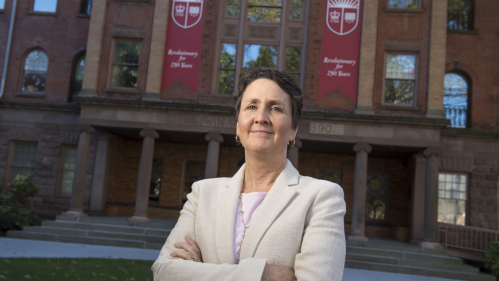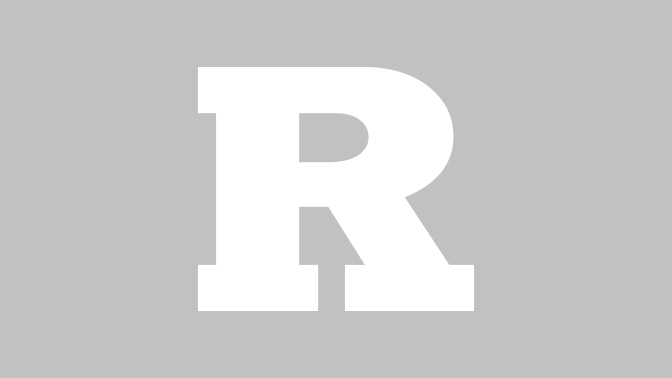University's Chief Information Officer Talks the Future of Technology at Rutgers

When Michele Norin began her career as programmer, information technology (IT) played little role in most university operations. Back-end services like payroll used it to automate repetitive tasks, and data-intensive sciences used it to crunch numbers, but many departments were still using typewriters.
Things had changed by 2015, when Norin came to Rutgers to assume the role of senior vice president and chief information officer. Smartphones, broadband, and popular apps had demonstrated the transformative power of technology. University leaders knew that technology could facilitate Rutgers’ many missions, and Norin was charged with building and maintaining a world-class IT operation.
Norin has advanced that mission so effectively that she just won the 2021 Leadership Award from the nation’s premier association for higher-ed IT, EDUCAUSE. The award was given “for demonstrating visionary leadership and effectiveness at institutional and organizational levels, for effectively advocating for the strategic value of IT to higher education… and for serving as a role model and exemplar to others in the IT profession.”
But Norin is not resting on her laurels. She has more improvements planned for this year. And the next. And the next…
How did you decide where to start when you arrived at Rutgers?
We listed all the major things the university does, and we devised plans for making each one easier. There was—and is—a plan to improve processes and modernize tools for the academic enterprise and a strategy to do the same for the health care enterprise and on down the list. Once we had the plans in place, we began working on all fronts.
Where did you see the most need for improvement?
Probably advanced research computing. We had no central program to support researchers who needed high-performance computing cycles and consulting time. There was some capacity in some departments, but that was it.
With Rutgers’ Office of Advanced Research Computing (OARC), we’ve obviously come a long way. How did we get there?
Working with the senior vice president for research, we asked the university’s research community what they needed and hired a leader to work on it. Now we have a robust program. Our researchers can rely on cycles for intense analytics, and they have the support that helps them get grants and do research.
How have your strategic priorities evolved over the years?
Our strategic priorities have mostly stayed constant, but the goals we define and actions we take within those priorities evolve as technologies advance. That said, there are places where we update or add goals. For example, we’re adding a data warehouse for sensitive health care data. This is going to be a game-changer because it will free researchers of the need to amass and secure their own data. They’ll spend much more time doing productive research, and data security will increase.
What other upgrades are coming to Rutgers?
We have just negotiated a universitywide license for Adobe Creative Cloud, so that’s now available to all faculty, students, and staff. That suite of apps has major capacity, and it will take people several years to really figure out all the ways they can utilize the software. Now that most faculty and students are working with Canvas, we’re adding more functions and features. We will also add functions to the myRutgers portal, and there are new tools coming soon for HR and payroll and all student systems. Those new tools will streamline hiring, performance management, salary management, training, and more.
What are some of the ways these changes will help students, faculty and staff?
These types of changes will expand capabilities for all members of the Rutgers community, letting them do more things for themselves in ways that are easier and faster, like selecting classes or submitting expense reports.
Recent IT upgrades allowed Rutgers to keep functioning during the pandemic. Were those moves undertaken with disaster preparedness in mind?
[Laughs] Well, we certainly did not foresee a global pandemic sending us home for a year. But even before then, people clearly wanted to be mobile, to be able to do things from anywhere, at any time, so we had been moving to scalable, web-connected, cloud-based solutions for years. All those moves got us ready and left us with few gaps. Where there were gaps, such as the lack of Zoom, the IT community rallied, worked all-hands-on-deck, sometimes around the clock, and got those gaps filled fast.
How do you think the pandemic will affect our technology usage going forward?
Our level of comfort is much better with communication technologies like Canvas and videoconferencing apps. People started off asking “How do I get myself off mute?” and now it’s “How do I run a poll or present data on half a screen or create subgroups?” People realize that the technology they’ve been forced to use this year is, for some use cases, better than what preceded it. They also realize there’s value in not having to be physically present so frequently, so I think a lot of life will be hybrid going forward.
Looking a few years ahead, what are the big IT opportunities for Rutgers and other universities?
I think the next big area is going to be analytics. Universities like Rutgers have a ton of data, and there’s a lot of great stuff that we can potentially do with it.
How will the use of data and analytics benefit Rutgers?
We are constantly striving to identify the success factors that predict progress for students, faculty, or staff members. But whatever those metrics are, we probably track them already. We just need to bring our data together and make it available—in a way that protects privacy—for the sort of analysis that might identify those metrics and let us use them to help all community members succeed. That’s going to require more than a data warehouse and an off-the-shelf analytics tool. It’s going to require us to equip our constituents with the skillsets and knowledge in using the tools to ask a lot of questions and do a lot of trial-and-error. But the potential is enormous.


